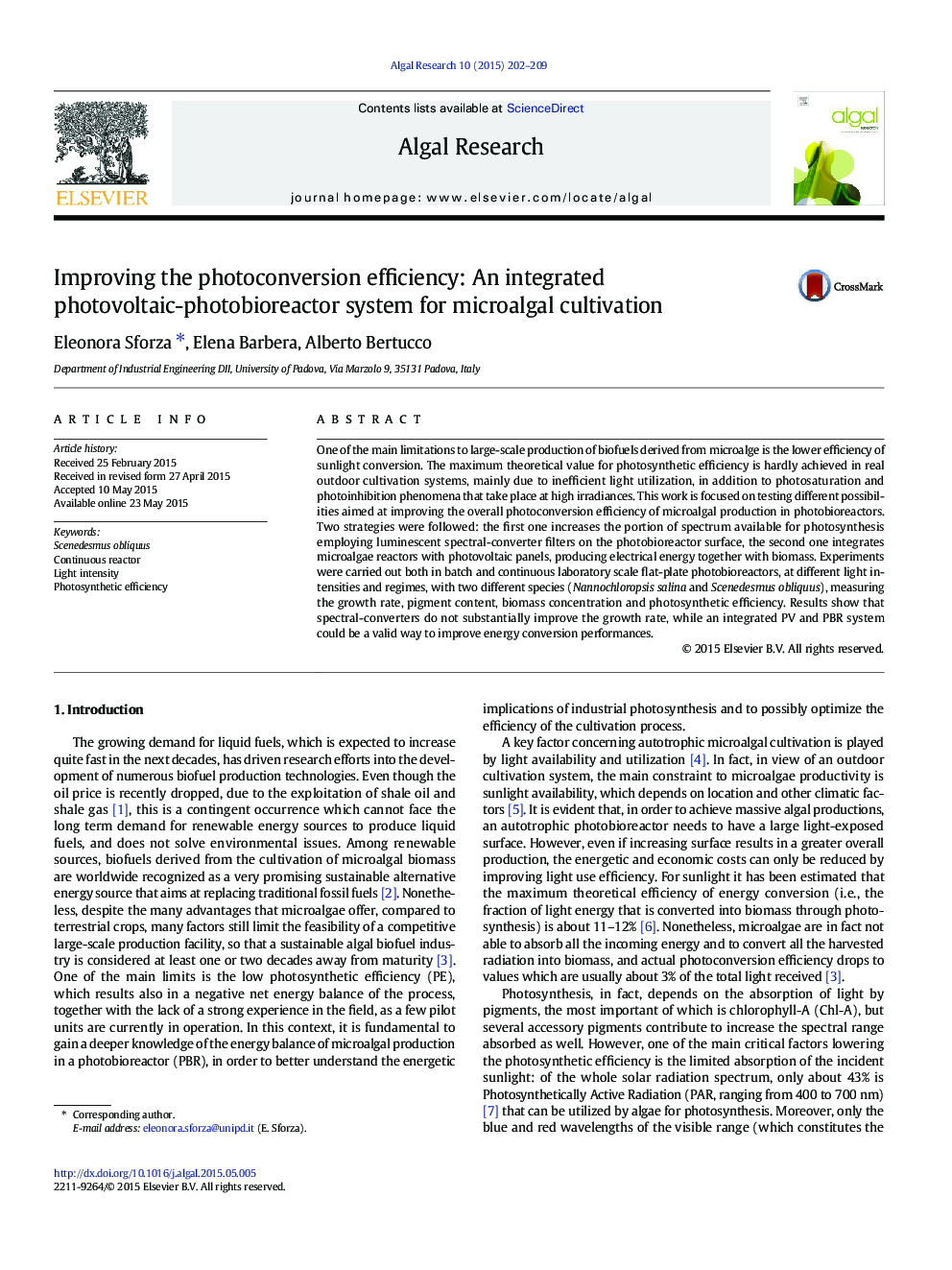| Article ID | Journal | Published Year | Pages | File Type |
|---|---|---|---|---|
| 1742024 | Algal Research | 2015 | 8 Pages |
•Two strategies to increase the photoconversion efficiency in batch and continuous PBRs were tested.•Spectral converters on PBR surface do not substantially increase algal growth.•Integration of photovoltaic panel on PBR surface increases the overall conversion efficiency.•A partial covering of the PBR surface results in lower photosaturation and inhibition.
One of the main limitations to large-scale production of biofuels derived from microalge is the lower efficiency of sunlight conversion. The maximum theoretical value for photosynthetic efficiency is hardly achieved in real outdoor cultivation systems, mainly due to inefficient light utilization, in addition to photosaturation and photoinhibition phenomena that take place at high irradiances. This work is focused on testing different possibilities aimed at improving the overall photoconversion efficiency of microalgal production in photobioreactors. Two strategies were followed: the first one increases the portion of spectrum available for photosynthesis employing luminescent spectral-converter filters on the photobioreactor surface, the second one integrates microalgae reactors with photovoltaic panels, producing electrical energy together with biomass. Experiments were carried out both in batch and continuous laboratory scale flat-plate photobioreactors, at different light intensities and regimes, with two different species (Nannochloropsis salina and Scenedesmus obliquus), measuring the growth rate, pigment content, biomass concentration and photosynthetic efficiency. Results show that spectral-converters do not substantially improve the growth rate, while an integrated PV and PBR system could be a valid way to improve energy conversion performances.
